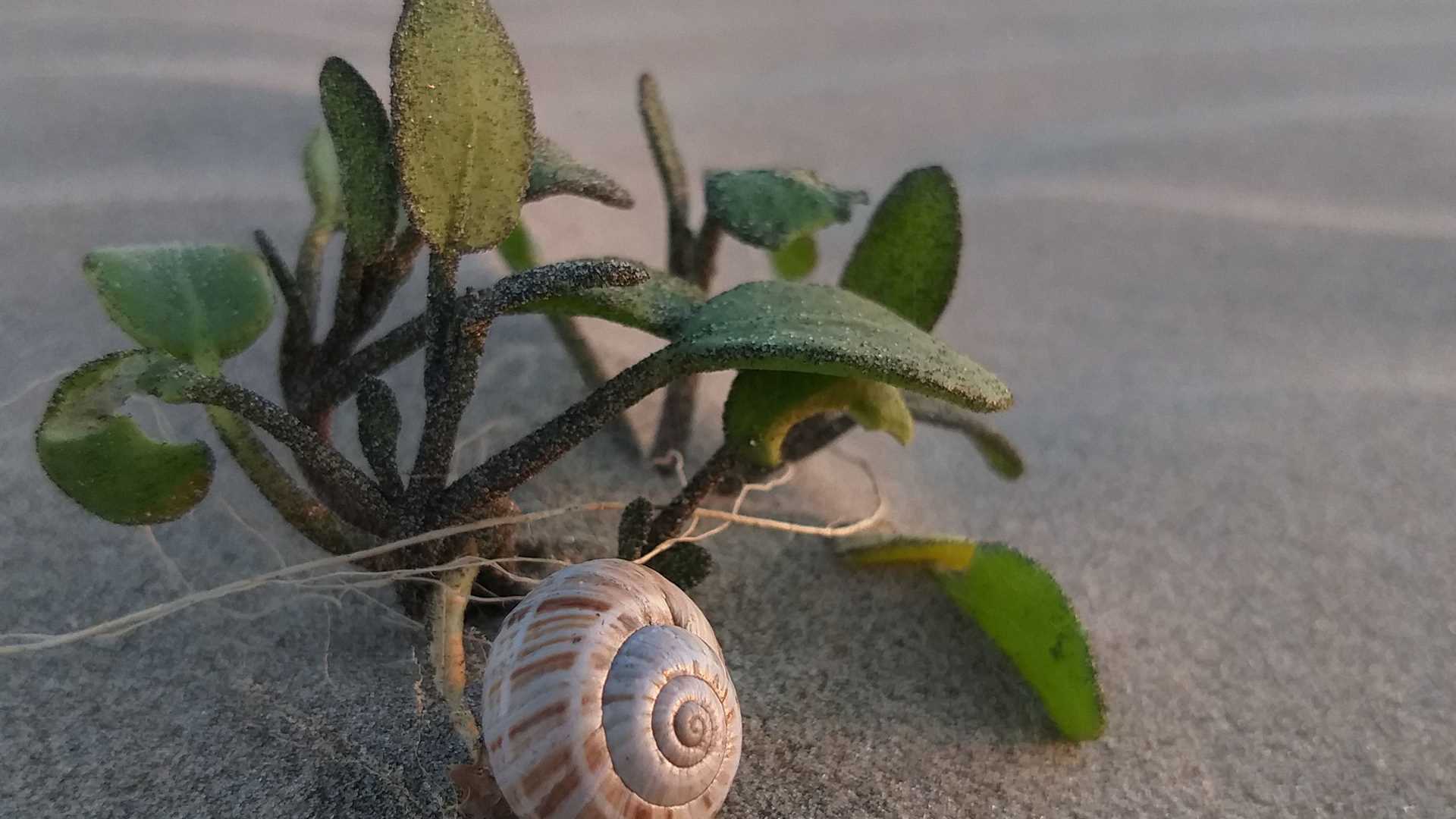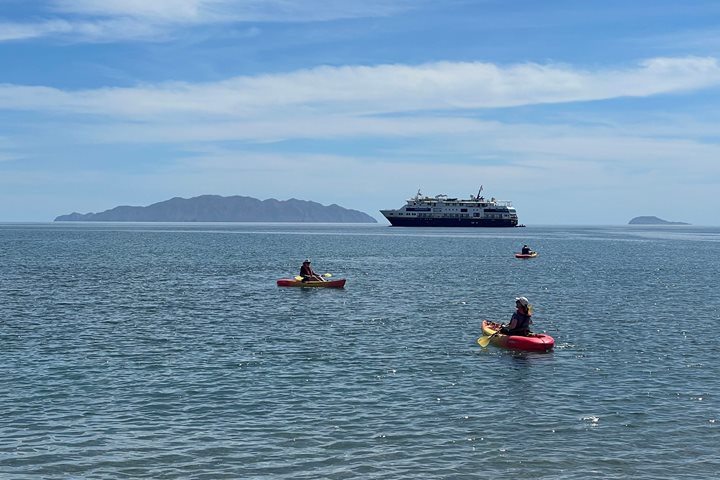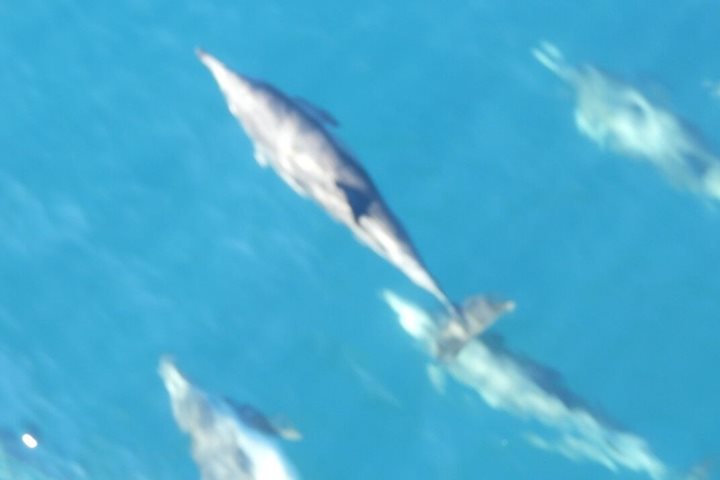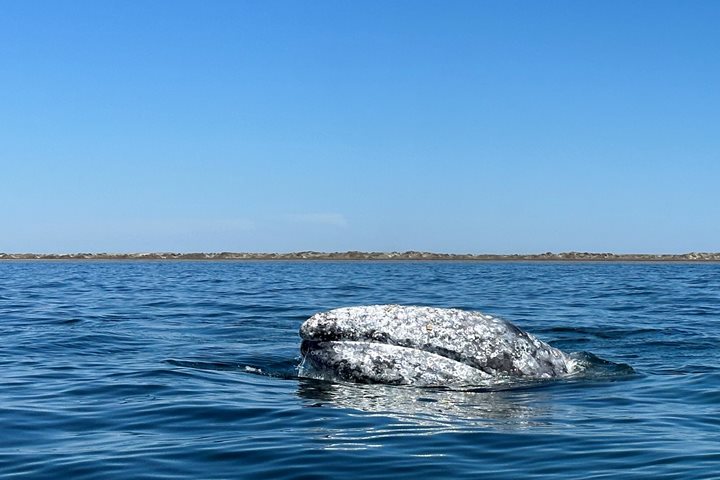After a nocturnal navigation along the southwestern Pacific side of the peninsula of Baja California, National Geographic Sea Bird made it to the quiet waters of the Magdalena Coastal Lagoon, a complex of five pieces of sea flanked by five barrier islands, which the gray whales make their reproductive grounds. Along the way, we spotted some blows from humpback and gray whales, and dozens of sea birds soaring over the sea. Just before lunchtime, the ship entered the protected bay and a stretching session soon started in the sundeck led by our wellness specialist Michelle. Some guests and naturalists enjoyed, for a while, the view of the mountainous part of the Magdalena Island, and the vast, flat, endless extension of the Magdalena plain on the peninsula. As a part of our navigational operation in the canal, we picked our local adviser Sergio and continued sailing northbound.
Then the vessel came into the narrow, shallow channel called Canal de la Soledad whose margins are lined by dense patches of red, white, and black mangroves, making it a perfect area for bird-watching. In fact, there were exciting sights of great blue herons, snowy egrets, gulls, terns, whimbrels, godwits, curlews and willets, among others. Additionally, on five different occasions, bottlenose dolphins joined in for a bow ride, for the joy of everybody on the ship. In the mid-afternoon, Rhodes Scholar naturalist July Kondor gave a presentation on gray whale biology and behavior as preparation for tomorrow’s whale watching. Once anchored in front of Lopez Mateos town, we were taken out for a shore and dunes excursion. Our guests walked on the wonderful sand dunes of Magdalena Island, bathed by the yellow and orange light of the last sunrays, and we discovered some of the plants that live in this harsh environment: sand verbenas and evening primroses were among them, growing in the middle of nowhere. Our full day of sailing and exploration ended with sights of gray whales from the sand dunes.









